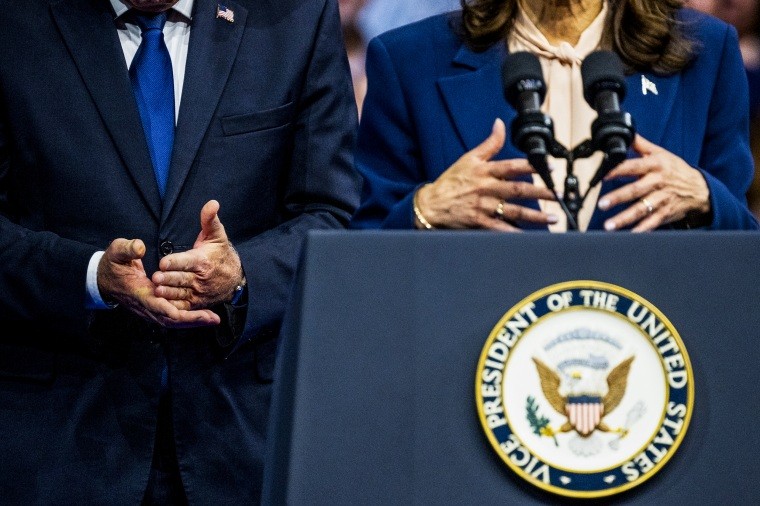The selection of a vice-presidential candidate is a pivotal moment in any presidential campaign, signaling strategic priorities and potential future leadership. In the recent considerations surrounding Vice President Kamala Harris, two names surfaced prominently: Josh Shapiro and Tim Walz. While Shapiro, known for his sharp legal mind and national ambitions, initially seemed like a strong contender, it was ultimately Tim Walz, the Governor of Minnesota, who emerged as the favored choice. This decision, while perhaps surprising to some, was rooted in a complex calculation of political needs and strategic advantages. Understanding why Tim Walz was chosen requires delving into the nuances of the selection process and the specific qualities that made him stand out.
Shapiro’s Promise and Perceived Pitfalls
Josh Shapiro, the Governor of Pennsylvania, possessed a compelling profile. His background as a prosecutor and his evident political aspirations positioned him as a dynamic and ambitious figure. Within Harris’s short list of potential running mates, Shapiro garnered significant vocal support. However, this support was counterbalanced by considerable public opposition, particularly concerning his stance on Israel and criticisms of pro-Palestinian protests. This sensitivity around the Israeli-Palestinian conflict was a significant factor, especially given the already fraught political landscape.
Furthermore, concerns extended beyond specific policy positions. Harris’s team reportedly questioned whether Shapiro, or any other candidates in the running, could genuinely deliver their home states in an election. Polling data suggested that Shapiro’s impact on voter turnout in Pennsylvania might not be as substantial as initially hoped. A Democratic strategist familiar with internal polling noted, “Polling showed Shapiro wouldn’t help that much more than the others… And bringing Gaza back into the foreground would just be awful all the way around. Nobody wanted to return to that.” The potential for renewed focus on the contentious Gaza issue was a risk many within the party were keen to avoid.
Adding to these concerns were other aspects of Shapiro’s record that raised red flags for Harris’s allies. These included his support for school vouchers, a sexual harassment claim against a former aide during his tenure, and a complex legal case dating back to his time as attorney general. These issues, while perhaps manageable individually, collectively presented a narrative that could be exploited by political opponents.
 Kamala Harris and Tim Walz at a campaign rally, highlighting Walz's selection as a running mate due to his perceived loyalty and team-player approach.
Kamala Harris and Tim Walz at a campaign rally, highlighting Walz's selection as a running mate due to his perceived loyalty and team-player approach.
Perhaps the most critical factor weighing against Shapiro was the perception of his own political ambition. The concern that Shapiro’s personal goals might clash with Harris’s was directly communicated to her team by an advisor to Senator John Fetterman, who himself had experienced public disagreements with Shapiro. As one senior Democrat with experience working with Shapiro stated, “I would not want to be ahead of Josh Shapiro in the line of succession.” This sentiment underscored a deeper unease about potential power dynamics and future political maneuvering.
The Ascendancy of Tim Walz: Loyalty and Teamwork
In contrast to the complexities surrounding Shapiro, Tim Walz presented a profile defined by stability and loyalty. Those close to Harris emphasized that her unique path to the vice presidency, coupled with the ever-present possibility of internal dissent and primary challenges in the future, necessitated a running mate who would be unequivocally supportive and steadfast. The political landscape was anticipated to become increasingly volatile, with the specter of “MAGA” forces unleashing intense attacks. Harris needed someone who could not only weather these storms but actively bolster her position. As described by an individual familiar with the Harris campaign’s strategy, “She needs someone who will be able to prop her up during hard times and someone who, when these memes take hold, when the deepfakes take hold, when all those things start happening, will be able to stand by her.”
Tim Walz, with his background in the military and education rather than the cutthroat world of electoral politics, was perceived as precisely this type of supportive figure. He was seen as a reliable “team player” who would not undermine Harris through leaks or behind-the-scenes maneuvering, particularly if she were to ascend to the presidency. This emphasis on loyalty was further solidified by Walz’s public defense of President Biden following a tense meeting with Democratic governors after a less-than-stellar debate performance. White House officials took note of this public display of support, and “loyal” became a defining descriptor for Walz within Biden’s circle. A person familiar with Harris’s thinking emphasized the importance of this quality, stating, “She really does need someone who’s going to be a true partner to her, just like she was to President Biden.”
Beyond Loyalty: Walz’s Broader Appeal
While loyalty was paramount, Tim Walz’s appeal extended beyond mere reliability. Although Harris and Walz had limited prior interactions, notably during her visit to a Planned Parenthood clinic in St. Paul, Harris and her team were closely observing potential candidates’ public appearances. Walz impressed them with his ability to generate positive media attention and connect with voters. His description of Republican JD Vance as “weird,” delivered shortly after Trump endorsed Vance, became a viral moment and resonated broadly. This single word was quickly adopted by the wider Democratic party, even being used by Harris herself at a fundraiser, demonstrating Walz’s unexpected ability to tap into the political zeitgeist.
Strategists also recognized Walz’s potential to broaden the Democratic party’s reach. Caitlin Legacki, a veteran strategist, contrasted Shapiro’s “next Obama” image with Walz’s more relatable “Jon Tester” persona, arguing that Walz’s style would resonate in suburban, exurban, and potentially even rural areas where Democrats often struggle. Furthermore, for Democrats concerned about engaging Muslim and Arab voters, particularly in crucial states like Michigan, Walz’s successful track record in Minnesota, a state with a significant Muslim population, offered reassurance and a valuable electoral asset.
Conclusion: A Strategic Choice for a Challenging Landscape
In conclusion, the selection of Tim Walz as the preferred vice-presidential candidate was a strategic decision driven by a confluence of factors. While Josh Shapiro presented a profile of ambition and dynamism, concerns about his potential political liabilities, personal ambitions, and capacity to unify key voter blocs ultimately weighed against him. Why Tim Walz was chosen boils down to his perceived loyalty, his reputation as a team player, and his potential to broaden the Democratic appeal, particularly in the Midwest and among diverse communities. In a political climate anticipated to be increasingly turbulent and divisive, Harris prioritized stability, reliability, and unwavering support, qualities that Tim Walz embodied, making him the strategic and ultimately compelling choice.
